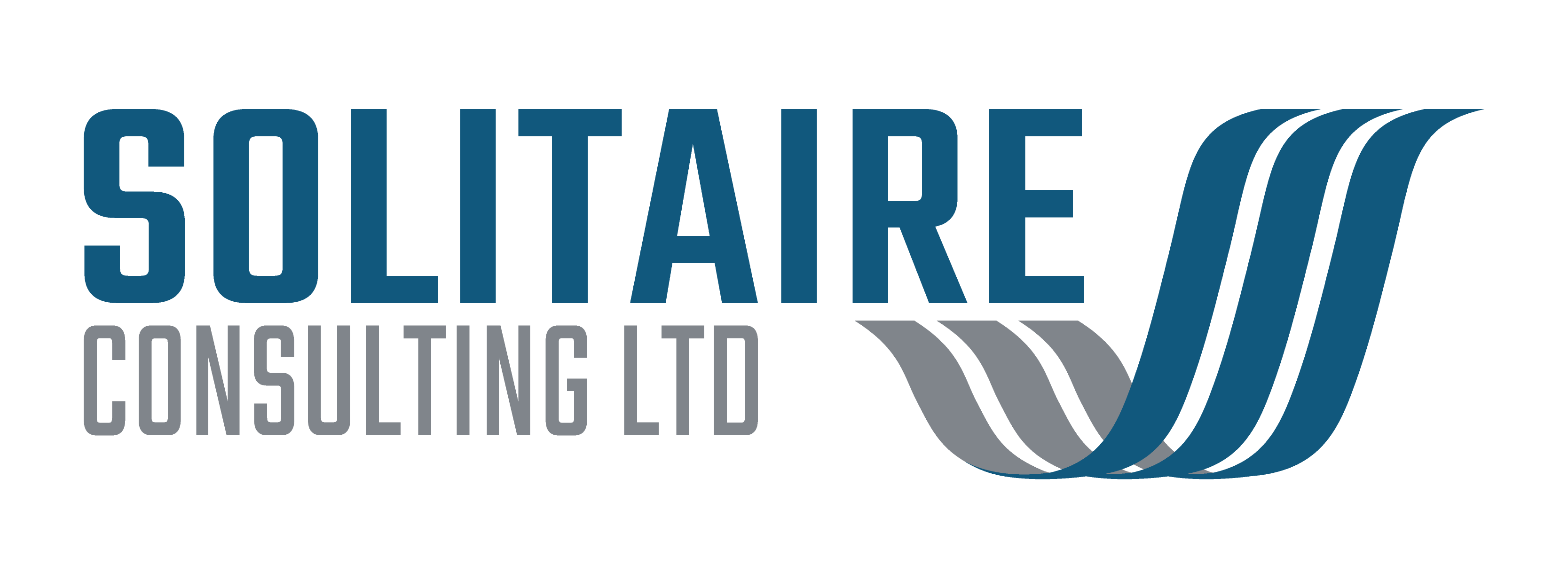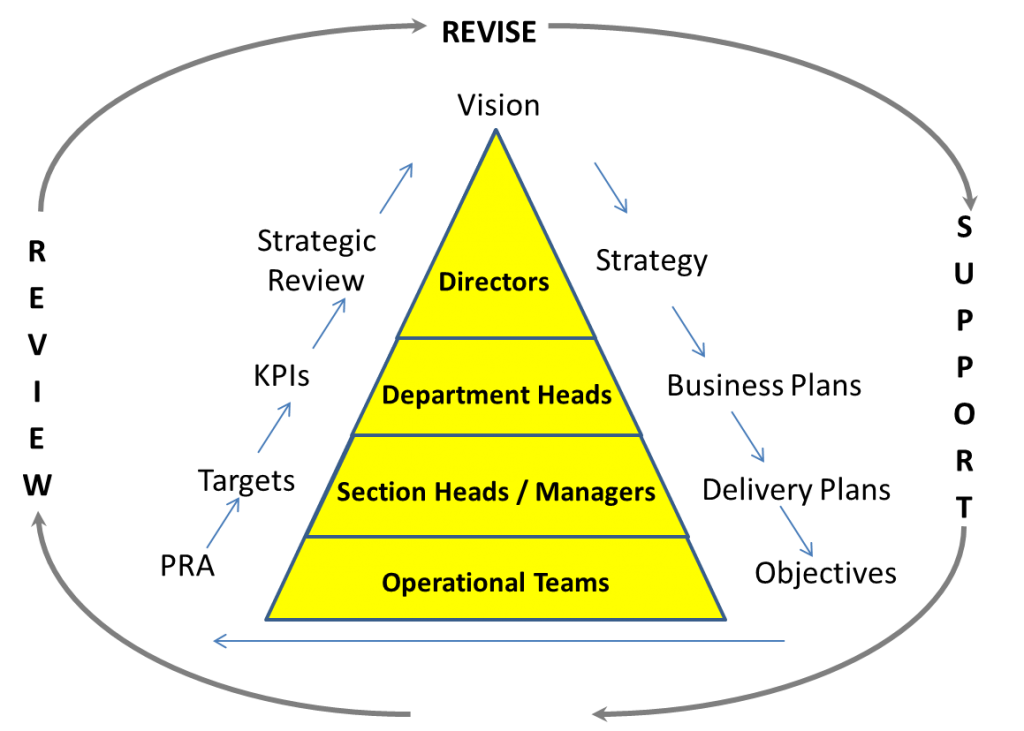In a recent post I explored the disconnect between strategy and action, that is evident in many of the companies we work with. What I’d like to do today is propose a simple model for achieving organisational alignment – or as I put it in the title – ensuring everyone is pulling in the same direction.
In the diagram below I have represented the organisation using the yellow triangle. Whilst this represents a traditional hierarchical model present in most corporates, the model still works for matrix or other flatter structures.
Whatever structure you have in your organisation you will have a vision of what you are trying to achieve. This vision needs to be developed into the strategy, i.e. how we are going to achieve the vision and in what time frame. The strategy is likely to consist of a number of high level objectives, which will need to be translated into more detailed action plans. The aim is to drill down into enough detail to link strategy to individual objectives. This provides the clarity to workers of how their job fits into achieving the overall vision. We have probably all heard the story of the man sweeping the floor at NASA being asked “what do you do here?” and responding “I am helping to put a man on the moon”. How would your staff answer this question?
It is not enough to just have your vision aligned to individual objectives, because you need to know that objectives and plans are being delivered to achieve the desired results. This is best achieved through an organisation wide performance management system, where individual performance review and appraisals align with team targets, which in turn feed into a strategic review. The use of a balanced range of key performance indicators (KPIs) is critical in measuring and managing performance.
Finally, empowered managers and a well developed set of organisational values will help to develop appropriate support mechanisms to ensure the framework adapts to changing circumstances.
This brief article is very simplistic and there is obviously a lot more detail that needs to be developed to put it into operation. However, I have seen it working well in a number of organisations and am currently working with an international law firm to help the partners align their strategy with the work that front line staff deliver.
If you can see gaps in your performance management framework and are not sure how to go about closing them, let me know so I can point you in the right direction.






